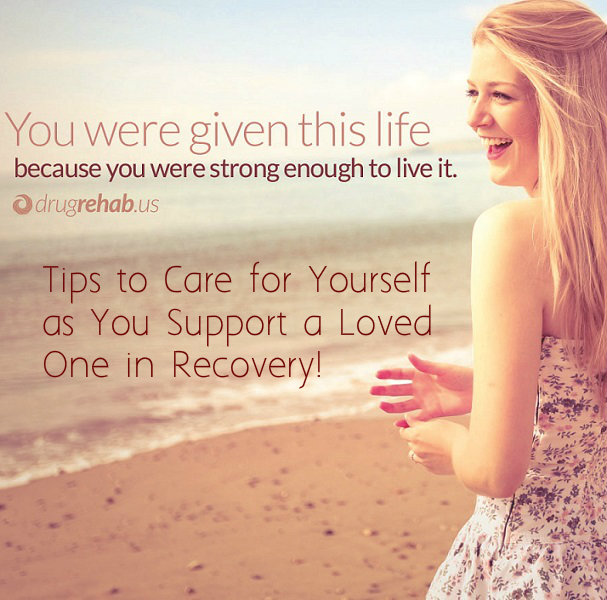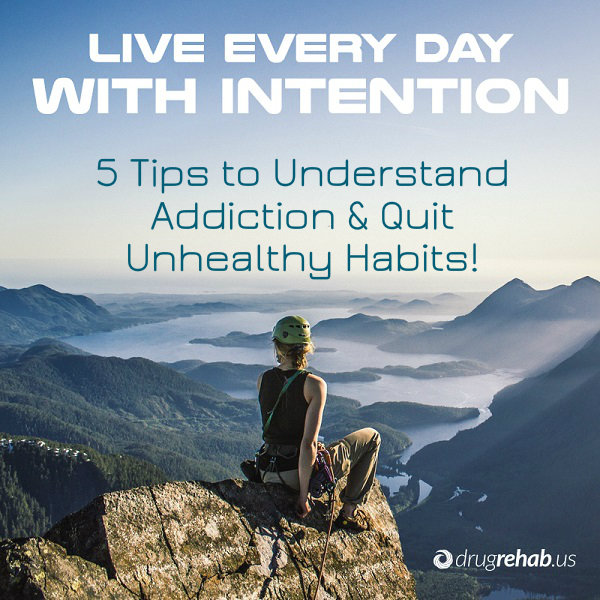29 Jan 2015
Healing From Depression In Recovery
Depression and addiction as co-existing disorders isn’t uncommon. If you’ve gone through rehab and addiction treatment and are now successfully in recovery, you’ve done some very difficult work to get better.
What if you now feel depressed? If you do, you’re far from alone. Nearly 9 million people struggle with both addiction and a mental illness. Any mental illness can co-occur with addiction, but depression is common.
Learning To Heal From Depression In Recovery
If you did your hard work in rehab and are now struggling with depression, you’re at greater risk of relapsing. Learn to heal from your depression so you don’t return to substance abuse and so you can live an enjoyable life.
Getting Diagnosis And Treatment
 The most important thing you can do now is to see a professional for a diagnosis. A mental health professional can tell you if you have clinical depression or if you are battling a normal and expected bout of depression after drug or alcohol addiction. Either way, getting treatment will help. Treatment for depression usually involves psychotherapy, cognitive behavioral therapy, group therapy, medication or some combination of these methods.
The most important thing you can do now is to see a professional for a diagnosis. A mental health professional can tell you if you have clinical depression or if you are battling a normal and expected bout of depression after drug or alcohol addiction. Either way, getting treatment will help. Treatment for depression usually involves psychotherapy, cognitive behavioral therapy, group therapy, medication or some combination of these methods.
Therapy can help you learn to recognize signs of depression and negative thoughts while also learning how to change them. Medication is a type of treatment that works for many people struggling with depression. However, as an addict in recovery you may not be comfortable taking a medication. That is a personal choice and one you should make with the advice of your doctor and therapist.
Positive Lifestyle Changes
While professional help is important in guiding you through post-rehab depression, you can also make positive changes that will improve your mood. None of these should be considered a substitution for professional care, but they can be used to supplement your treatment:
- Exercise – One important thing to do is to start exercising and eating well. Being in good physical condition will go a long way toward improving your mood. Furthermore, exercise is known to lift the mood immediately. If you feel like you can barely get out of bed in the mornings, the idea of exercise may be daunting. Start small with a short walk each day and see how it makes you feel.
- Be social – Another important way to battle depression is to be social. Spend quality time with people you enjoy. You don’t have to have a lot of friends or go to parties to be social and to benefit from socializing. Having a cup of coffee with a good friend or dinner with your family are great ways to feel better about your life. Social support is crucial to both sobriety and mood.
- Make life meaningful – Develop meaningful activities in your life. For people in recovery, sobriety often feels like a big gaping hole. You spent so much time and energy using, you may now feel lost. Fill up that hole with activities that are healthful and meaningful. Work at a job you enjoy. Do volunteer work. Take up a creative hobby like painting or writing. Adopt a dog or cat from a shelter and learn to take care of it. All of these things are meaningful and special and will make your life feel worthwhile.
Caring And Effective Depression Treatment Is Available
Depression is a serious mental illness, and it can take over your life if you do not challenge it. As an addict in recovery, you face additional challenges. If you just can’t shake your feelings of depression no matter what lifestyle changes you make, be sure to seek professional help. Depression is treatable and you don’t have to suffer.
Call Us Now For Mental Health Or Addiction Help – We Are Here For You Because You’re Worth It!…Always!
When you have a loved one battling addiction, especially if it is someone close to you, it is all too easy to get wrapped up in his problems and his needs. As you support him, stand by him and care for him, don’t forget to take care of yourself. Caretakers often lose sight of who they are and become stressed, overwhelmed and sometimes even physically ill from the strain of caring for someone else. Take time for your own needs while still supporting your loved one and you will stay healthy and sane and better able to care for him.
Tips For Caring For Yourself As You Support A Loved One In Recovery
Lending Support In Recovery – Make A Plan
What does healthy support look like? If you have never stood by someone through such a difficult period of healing and transition, and if you have never watched while someone else played the role of caregiver and supporter, you may not know what is appropriate. What works for you and for your loved one is up to the two of you to decide. You need to decide if you should be living with this person, how much time you will spend with him and what form your support will take.
If, for example, you are caring for a child in recovery, you might want to stay with him until he is well enough to be independent. On the other hand, if you are supporting a friend, living together may not be an option. Instead, you may visit her every day, drive her to support group meetings or be on call as needed. Devoting all of your free time to supporting someone you care about is not necessarily feasible or appropriate. Set limitations and decide how much you are able to give.
Prepare A Support System For You
There are support groups for loved ones of addicts for a reason. Helping someone who is battling addiction, even if that person is getting professional help at the same time, isn’t easy. Knowing how tough this may be, get your own support system together. Let some of your friends or family members know what is going on in your life and that you may need to talk over a cup of coffee. Also consider picking up meeting schedules for support groups. Talking with people who have been where you are can be powerful.
Get Others To Assist
It may be that your loved one has few other people to whom he can turn for support. He may be relying solely on you. Ideally, though, you can call on others to fill in when you can’t be there. Ask trustworthy people who also care about him to spend at least a little time with him. Even just an hour here and there can be a great relief to you.
Take Time Off And Take Care Of Yourself
You can’t be there for your loved one 24 hours a day, seven days a week. It’s not practical and it isn’t good for you. When you feel overwhelmed, take a break. Whether this means taking a walk outside for an hour, spending a day pampering yourself or taking a quick weekend trip to relax and de-stress, do it. Get plenty of sleep each night, eat well, make time for exercise and fun and take time away from your duties. No one can be there for a recovering addict all of the time. If you take care of yourself, you will be better able to help the one you love overcome his struggle.
Discover Why You Should Join A Support Group As The Loved One Of An Addict – You Need Help And Healing Too!
OxyContin is the brand name of an extended-release painkilling medication that contains the opioid narcotic substance called oxycodone. In its original form, this medication was easy to tamper with and use as a source of opioid abuse. In response to this situation, the manufacturers of OxyContin reformulated the medication and made it considerably more tamper-resistant.
In a study published in June 2014 in the journal Drug and Alcohol Dependence, a team of U.S. researchers investigated whether the reformulation of OxyContin has had the desired effect of reducing the number of people who use the medication in a pattern of opioid abuse.
Oxycodone And OxyContin
Oxycodone is a generic opioid medication noted for its usefulness in the relief of various forms of serious or severe pain. Like all other opioid drugs and medications, it can trigger diagnosable problems with abuse or addiction when used in ways not sanctioned and monitored by a doctor. Some branded medications contain oxycodone in combination with other, less-powerful painkilling substances such as acetaminophen, aspirin or ibuprofen.
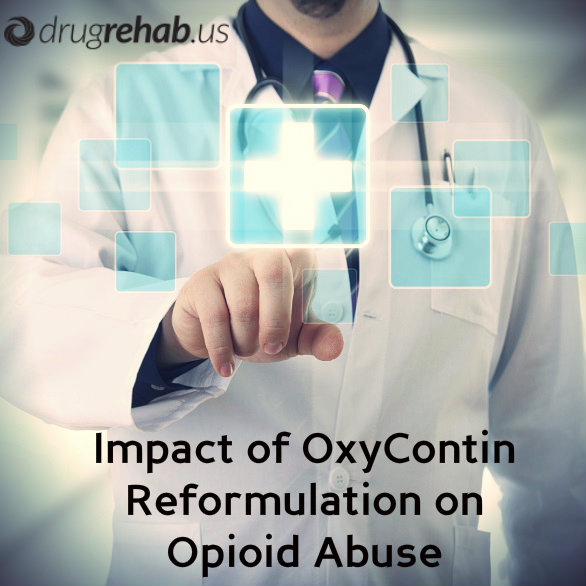 Common examples of these combined medications include Percocet, Endocet, Percodan, Combunox and Roxicet. Other branded medications contain only oxycodone as their active ingredient. In addition to OxyContin, examples of these medications include Oxecta and Roxicodone.
Common examples of these combined medications include Percocet, Endocet, Percodan, Combunox and Roxicet. Other branded medications contain only oxycodone as their active ingredient. In addition to OxyContin, examples of these medications include Oxecta and Roxicodone.
OxyContin arrived on the U.S. market in 1995. It is specifically designed to provide extended amounts of pain relief to people affected by ongoing moderate or severe pain. Since it must produce its effects for many hours, an OxyContin tablet contains more oxycodone than most other available medications.
Unfortunately, in its original form, the medication was highly susceptible to crushing, chewing, dissolving and other forms of manipulation that made its oxycodone content available all at once. This fact made OxyContin a prominent target for abuse by people seeking the recreational drug effects of opioid intake. Widespread availability of the medication also contributed to its prominent role in opioid abuse in the U.S.
OxyContin Medication Reformulation
Along with addiction specialists, public health officials and drug enforcement officials, the manufacturers of OxyContin (Purdue Pharma LP) became well aware of the role that abuse of the medication played in the larger phenomenon of prescription opioid abuse.
In response, they withdrew the original formulation of OxyContin from the market and, in August 2010, released a new version of the medication that is substantially harder to use as a source of abuse. Specific steps taken during this reformulation include minimizing the availability of oxycodone even after crushing or other manipulation occurs, as well as making it impossible to pass a dissolved form of the medication through a syringe for injection.
Impact Of OxyContin Reformulation On Opioid Abuse
In the study published in Drug and Alcohol Dependence, researchers from the University of Kentucky and Purdue Pharma used interviews with a group of 189 adults with a prior history of abusing OxyContin to assess the effectiveness of the new formulation of the medication in discouraging opioid abuse. During these interviews, each participant was asked to compare their monthly level of involvement in opioid abuse before the OxyContin reformulation to their monthly level of involvement after the reformulation.
After analyzing the results of the interviews, the researchers found that 33 percent of the participants had tried to abuse the reformulated version of OxyContin in the month before the study. This contrasted with a 74 percent rate of monthly OxyContin abuse prior to the reformulation, as well as with a 96 percent rate of monthly abuse for any form of immediate-release oxycodone.
Individual rates for snorting and injecting the reformulated medication were also substantially lower than the snorting and injection rates associated with both the old version of OxyContin and oxycodone products that release immediately into the bloodstream. Overall, the study participants tried to abuse the reformulated OxyContin on roughly two out of 30 days. In contrast, abuse of the original version of the medication took place approximately 13 days a month, while abuse of immediate-release oxycodone took place about 20 days a month.
The researchers note that abuse of the old version of OxyContin among the study participants became much less common after the new version of the medication reached the market. In addition, they note that the participants rarely shifted from oxycodone abuse to heroin use. All told, they concluded that, at least among the people who took part in the study, the new version of OxyContin does not play the same prominent role in opioid abuse as the original version of the medication first released in the 1990s.
Do You Or Someone You Know Need Help With Prescription Drug Addiction?
Call Us Now! Help is Available 24/7!
19 Jan 2015
Is Your Partner A Compulsive Gambler?
Gambling can be a fun, and sometimes profitable pastime, but it is an activity that can easily spin out of control. It goes by many names: compulsive gambling, problem gambling and pathological gambling. Whatever you call it, gambling addiction is a serious problem that can lead to severe negative consequences.
Signs And Symptoms That Your Partner Is A Compulsive Gambler
If you suspect that your boyfriend or husband has a problem with gambling, you should learn to recognize the signs of an addiction and sit him down for an important conversation about slowing down or getting help.
Early Signs Of Problem Gambling
No addiction starts out at full speed. If your partner has a problem with gambling it probably started out innocently enough. Maybe he had a big win at a casino trip and wanted to keep trying to win again. Maybe he started playing online poker after work to unwind and now can’t stop.
 If he is in the early stages of compulsive gambling, you have a good chance of convincing him to make some changes. Early signs and symptoms of gambling include:
If he is in the early stages of compulsive gambling, you have a good chance of convincing him to make some changes. Early signs and symptoms of gambling include:
- A preoccupation with gambling.
- Lying about time spent gambling or amounts of money lost.
- Gambling to soothe negative emotions such as stress, depression or anxiety.
- Cutting out other interests and hobbies in favor of gambling.
- Gambling in spite of negative consequences, such as big losses or arguments about time spent gambling.
- Trying to cut back on gambling time, without much success.
Symptoms Of A Gambling Addiction
The early signs of a gambling problem may be hard to recognize or pin down. They may be mild enough that you and your partner are able to deny that there is an issue. If you don’t confront the problem you could be facing a worsening obsession with gambling and even an addiction or a case of pathological gambling. Here are some signs that your partner has a serious problem with gambling and needs help:
- He feels restless, irritable and anxious when he can’t get to the casino or to an online gambling site. These are symptoms of withdrawal and a sign of a behavioral addiction.
- He has developed a tolerance. This means that his usual time spent gambling doesn’t feel like enough anymore. He needs to spend more and more time gambling to feel good.
- He is experiencing serious financial setbacks because of gambling and yet continues to do it. A hallmark of any addiction is continuing in the face of serious negative consequences. For gamblers, this usually means losing a lot of money. He may even lose his job because of missed time or gambling online while at work.
- He takes extreme measures in order to gamble more. This may mean stealing to fund his habit or taking out big, risky loans.
- He experiences manic episodes when winning and severe depression when losing. His emotions are deeply tied to his gambling.
What To Do If You Believe Your Partner Has A Problem With Gambling
Compulsive gambling is a serious problem and is one that can tear relationships apart. If your partner is exhibiting any of the signs of having this problem, it’s time for an important discussion.
Approach your partner with concern and compassion and suggest that he may have a problem. Explain how his gambling is impacting your life and your relationship and offer to help him quit or cut back. If he refuses help or is in denial, don’t give up. Ask other family members or friends to confront him as well and be prepared with options for getting professional help.
Take steps now, before it is too late and your relationship is completely destroyed by gambling addiction.
Do Heroin And Gambling Addicts Share Similar Brain Changes? – Find Out Now
Do You Or A Loved One Need Help With A Substance Or Behavioral Addiction?
Call Us Now To Take The First Step Toward A New Life…You Are Worth It!
Marijuana is the most popular illicit/illegal drug in the U.S. among both younger and older people. In some cases, people who consume marijuana may also be active participants in other forms of drug use.
In a study published in September 2014 in the Journal of Addictive Diseases, a team of American researchers explored the connection between marijuana use and the intake of other drugs among young people transitioning from adolescence into early adulthood. These researchers concluded that daily consumers of marijuana in this age range are statistically more likely to also use additional drugs.
Stats On Marijuana, Older Teens And Young Adults
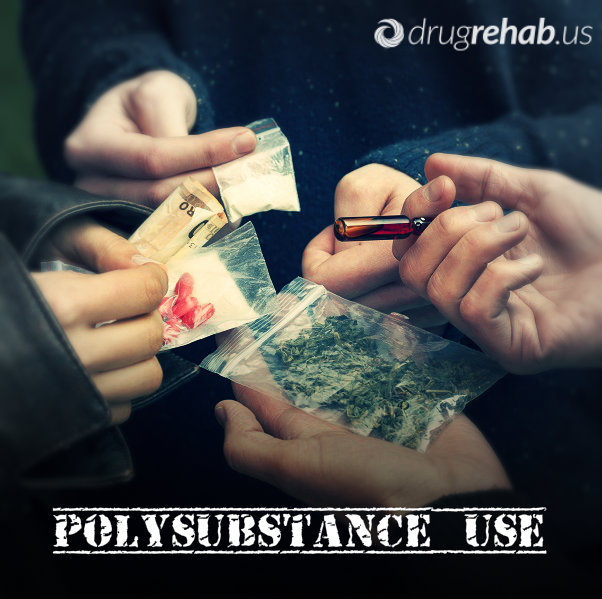 Approximately 19 million Americans over the age of 11 consume at least some amount of marijuana in a typical month, according to 2012 figures compiled through a federal project called the National Survey on Drug Use and Health.
Approximately 19 million Americans over the age of 11 consume at least some amount of marijuana in a typical month, according to 2012 figures compiled through a federal project called the National Survey on Drug Use and Health.
All told, users of this cannabis product account for close to 80 percent of the nation’s entire population of illicit/illegal drug users. Roughly 63 percent of the nation’s illicit/illegal drug consumers only use marijuana, while the remainder of marijuana users also consume at least one other drug.
Teenagers over the age of 15 and young adults under the age of 26 have the highest monthly rates for marijuana intake. Approximately 14 percent of 16- and 17-year-olds consume some quantity of the drug in the average month. The monthly rate of marijuana use rises to nearly 19 percent in older teens and younger adults between the ages of 18 and 25. Roughly 7.6 million American teens and adults qualify as daily marijuana users by consuming the drug at least 20 days a month. In addition, roughly 5.4 million American teens and adults consume marijuana at least 300 days a year.
Polysubstance Use
Marijuana users who also consume other drugs participate in a form of substance use commonly known as polydrug or polysubstance use. As a rule, polydrug users have heightened chances of experiencing the damaging effects associated with the substances they consume.
Damaging Effects Of Polysubstance Use
These effects include:
- overdoses
- serious changes in cardiovascular (heart and blood vessel) function
- serious changes in lung function
- significant body temperature alterations
Serious changes in mental function can also occur that may qualify as symptoms of mental illnesses such as:
- major depression
- anxiety disorders
- psychosis-related disorders
Examples of additional substances sometimes consumed by marijuana users include the stimulant cocaine, methamphetamine or other stimulants, opioid drugs or medications, inhalants, sedative-hypnotic medications (i.e., tranquilizers and sleep medications) and hallucinogens.
Drugs Linked To Marijuana Use
In the study published in the Journal of Addictive Diseases, researchers from Brown University, Brown-affiliated Butler Hospital and the Veterans Administration used an examination of 1,075 people transitioning from adolescence to adulthood to determine the forms of polysubstance use most likely to occur among marijuana users in their late teens or very early 20s.
During interviews with the researchers, each of these study participants submitted information on his or level of involvement in marijuana use, as well as his or her level of involvement in the use of cocaine, stimulants other than cocaine, opioid drugs or medications, sedative-hypnotic medications, hallucinogens and/or inhalants. T
he researchers also gathered background information on such factors as each participant’s demographic profile (age, racial/ethnic ancestry, gender, etc.) and level of involvement in binge drinking.
Some of the young people enrolled in the study qualified as daily marijuana users, while others did not. After completing their analysis, the researchers concluded that daily consumers of the drug are substantially more likely than other people in the same age range to consume:
- cocaine
- non-cocaine stimulants
- inhalants
- opioid drugs and medications
- nicotine/tobacco
This finding holds true even when considerations such as demographic profile and level of binge drinking involvement are taken into account.
Based on their findings, the study’s authors concluded that daily marijuana users are unusually likely to participate in polysubstance use during the transition between adolescence and early adulthood. They also concluded that these daily consumers of the drug may have increased chances of experiencing notably negative health outcomes.
It’s important to note that, even in the absence of polysubstance use, daily marijuana use has clearly negative health impacts. For example, figures compiled by the National Institute on Drug Abuse indicate that roughly one-quarter to one-half of all daily consumers of the drug will eventually merit a diagnosis of cannabis addiction (part of a larger condition called cannabis use disorder).
Do You Or Someone You Love Need Help Overcoming Marijuana Addiction?
Learn More About Marijuana Rehab Treatment – Turn A Life Around Today!
12 Jan 2015
Codependents And Their Drug Of Choice…The Addict
Codependents are people who love addicts or alcoholics. While the alcoholic or addict is obsessed with his or her drug of choice, the codependent’s drug of choice is the addict. The addict is obsessively chasing his or her next high while the codependent is addicted to the drama and the challenge of bringing everything under control.
If The Addict Gets Sober It Doesn’t Mean The Problems Go Away
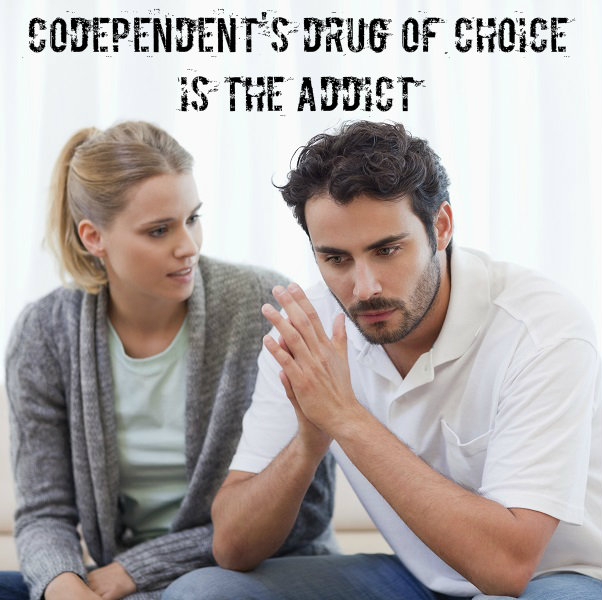 It’s not intentional, of course. If you’re involved with an addict, you probably believe with all your heart that once he or she gets sober, everything will be fine.
It’s not intentional, of course. If you’re involved with an addict, you probably believe with all your heart that once he or she gets sober, everything will be fine.
You believe the root of all of your problems is the addiction, and if the addict would only stop abusing drugs, life could go back to normal. So you keep trying to fix him.
It’s not that simple. Even if the addict gets sober, you will continue to relate to each other in unhealthy ways. In particular, you will probably continue to try to control or obsess about the addict even when he isn’t revolving his life around drugs.
Involved With One Troubled Person After Another
Many codependents find that even if they end a relationship with one addict, they immediately get involved with another one. If you have codependent tendencies, you may wonder why you seem to get involved with one addict or troubled person after another. You seem to be perpetually drawn to people who are emotionally unavailable. For one thing, thinking about them and their problems allows you to avoid thinking about your own.
Sooner or later, every codependent has to face the fact that the real problem isn’t all about the addict.
Characteristics Of Codependents
People who have a problem with codependency share certain characteristics that offer clues to why they are drawn to troubled people. Here are some of them.
- You put the needs of others before your own – Codependents are quick to put their own needs aside so that they can be constantly available to other people. The root of this tendency is low self-esteem.
- You desperately seek solutions outside yourself – Drug addicts look for substances outside themselves to fix their problems and alter their moods. As a codependent, so do you. You look for people to revolve your life around and alter your mood.
- You tend to take on too much responsibility – This leads you to do for others many things that they should be doing for themselves. You do more than your share most of the time, and eventually you feel overwhelmed and resentful.
- You have a deep fear of abandonment – You are terrified of being alone. In your relationships, you may put up with treatment that you know is unacceptable, but you are more afraid of being abandoned than you are of being abused. Being left alone is one of the worst things you can imagine.
- You constantly try to please people and you feel unappreciated – You want people to like you so much that you’re always trying to please them. You give and give and give some more, but no one seems to notice or appreciate you. You avoid asserting your own needs or getting into any kind of conflict.
- You lose yourself in relationships – You get so wrapped up in your relationships that you can barely remember who you are. You might give up your hobbies so you can be available to your loved one, or you might even change your core beliefs. Your conversations are always about what your loved one is doing, what his interests are, and what he wants. You rarely talk about yourself or think about yourself.
Recognize You Have A Problem And Get The Help You Need…And Deserve!
Codependents put a great deal of effort and energy into other people’s lives, but have a great deal of trouble focusing on their own. They get caught up in other people’s emotions, feeling happy when others are happy and sad when others are sad.
If you are a codependent, you are probably so other-focused that you don’t even realize you have a problem. Recognizing you have a problem is the first step toward recovery. Help is available through therapy and support groups such as Alanon. If you commit to getting past codependence, you will learn to focus on yourself and your own life, and to put your energy into changing what you can—yourself.
Believe In Yourself – You Are Worth It & Always Have Been…Always
Addictions come in many forms, ranging from the more obvious examples such as heroin or cocaine addiction right through to more subtle forms such as food, sex or social media addiction.
Although they might seem like distinct issues, they’re all described by the word addiction because they share many similarities, and they can all be helped in the same basic way. Writing in the U.K. newspaper The Telegraph, therapist David Smallwood shares five tips for understanding addiction and overcoming unhealthy habits.
Tips For Understanding Addiction And Quitting Unhealthy Habits
1. Determine Your Vice
The fact that not all addictions conform to the stereotypical image of persistent drug or alcohol abuse means it’s not as easy as you may think to work out whether you have an addiction or what the subject of it is. Remember that more socially acceptable activities, such as drinking cup after cup of coffee, working 12-hour days, going to the gym every day and eating sugar or fat-laden foods can also be the subjects of addictions. Smallwood suggests that asking a friend to critique your lifestyle may reveal some issues you aren’t aware of, even if it isn’t always a pleasant experience.
2. Learn And Avoid Your Triggers
Compulsive behaviors are a core feature of addiction, and these compulsions are brought on by internal and external “triggers.” These are feelings or situations that lead you to crave your substance or activity of choice, such as loneliness, anger, exhaustion, stress, depression or hunger. Once you identify the factors that are most crucial in creating your cravings, the goal is to break the link between the triggers and the resulting behavior. For example, if you feel stressed or irritable, you should consider calling a friend or family member, taking deep breaths, having a warm drink or taking a calming walk. Smallwood emphasizes the importance of breakfast; if you skip it, mounting hunger cravings throughout the day may be misconstrued as cravings for your substance or activity of choice.
3. Practice Mindfulness And Stay In The Moment
The basic premise of mindfulness—staying “in the moment”—is a useful tip for managing anxieties associated with attempting to remain abstinent. The goal is to focus on the now rather than getting caught up in the past or future; in Smallwood’s words, “Focus on what you are doing, rather than what you are not doing.” Take a walk and focus on the sensory information you’re absorbing; pay attention to the vibrant colors and silky textures of flower petals or the chirping of courting birds rather than being lost in regrets from the past or fears about the future. Practice meditation to improve this skill: simply sitting for 20 minutes or so and trying to focus on one thing (such as your breathing) can help empty your thoughts and bring about mindfulness.
4. Tackle The Underlying Problem
One common problem you may encounter when trying to overcome addiction is “cross addiction.” You might quit smoking, for example, only to “fill the gap” by overworking or overeating. In reality, the real cause of addiction is something deeply rooted, not the specific substance or behavior. If you switch from smoking or drug abuse to overeating, you’re just swapping one addiction for another. Smallwood jokingly compares this to swapping deck chairs on the Titanic; it’s not exactly the same situation, but you’re still heading for trouble on the same boat. Identify the root cause of your addiction (addiction treatment professionals are invaluable in this area) and work on overcoming it, rather than allowing it to manifest in a new way.
5. Set Goals
If you’ve resolved to overcome addiction, it’s important to establish what you’re trying to achieve. Setting definite goals gives you something to work toward, and later down the line, it can help you appreciate how far you’ve come. Smallwood suggests choosing a point of time—two months in the future, two years in the future, whenever suits you—and writing yourself a letter detailing your current lifestyle and how you’d like it to have changed at your chosen date. Put it in an envelope and keep it somewhere prominent and noticeable, with your chosen date written on it. The closed envelope will serve as a reminder of your goals, and when the date arrives, you can read the letter and see if you’ve been successful in your intentions. Taking a step back and examining your lifestyle like this can give you the motivation to keep working to improve yourself and your life.
You DO Have What It Takes To Overcome Addiction!
Beating addiction isn’t easy. It’s a fiendish enemy that can hide in the shadows, change appearances like a chameleon and come back into the fray when you least expect it. But that doesn’t mean you can’t do it, and with the right support and a positive mindset, you do have what it takes to make a change in your life. These five tips don’t cover every aspect of the issue, but they provide a useful, at-a-glance run-through of the core steps in overcoming addiction. If you keep these lessons in mind and work to implement them in your life, you’ll soon be on your way to regaining control and getting your life back on track.
Inspirational Recovery Posts – Be Informed & Inspired!
Opioid maintenance therapy is the term used to describe the ongoing use of an opioid-based medication as a treatment for people recovering from uncontrolled opioid addiction. While doctors often use a medication called methadone in this form of therapy, they can also use a generally safer medication called buprenorphine.
In a study published in October 2014 in the American Medical Association journal JAMA Internal Medicine, a team of American researchers assessed the potential role of opioid maintenance therapy in preventing the spread of hepatitis C infections among people who use injection drugs.
Opioid Maintenance Therapy
Opioid-based medications are commonly used to help people who enter treatment for an addiction to heroin, prescription opioids or other opioid substances. These medications are useful in two treatment contexts: opioid detoxification and opioid maintenance. During opioid detoxification, doctors temporarily use opioid-based medications to help people in treatment avoid the potentially severe, relapse-promoting effects of opioid withdrawal.
 During opioid maintenance, doctors use controlled doses of an opioid-based medication as a longer-term, safer alternative to the uncontrolled substance intake that characterizes opioid addiction. Some people receive opioid maintenance therapy for a few months, while others receive the therapy on an ongoing basis.
During opioid maintenance, doctors use controlled doses of an opioid-based medication as a longer-term, safer alternative to the uncontrolled substance intake that characterizes opioid addiction. Some people receive opioid maintenance therapy for a few months, while others receive the therapy on an ongoing basis.
The medication most associated with opioid maintenance therapy is methadone, a fairly powerful opioid substance only available in the U.S. in certain facilities licensed and monitored by the federal government. However, many programs now use buprenorphine, a weaker opioid substance legal for use in a much wider range of treatment settings.
Generally speaking, buprenorphine does not come with the same potential for abuse as methadone. In addition, while people who abuse methadone can easily experience an opioid overdose, buprenorphine overdoses are relatively rare. Also, people who abuse buprenorphine have much lower chances of developing medication dependence.
Hepatitis C
Hepatitis C is the name for a viral infection that produces significant and potentially dangerous inflammation inside the liver. The same name also applies to the virus (also known as HCV) responsible for causing this form of infection. Like all viral infections, hepatitis C is contagious. In America, people who use injection drugs are the most likely population group to experience exposure to HCV. Typically, such exposure occurs during the unsanitary use of needles and syringes or other types of paraphernalia associated with injecting drugs or medications into a vein, into a muscle or under the skin. Some people develop a limited form of hepatitis C known as acute hepatitis C.
However, others develop a much more serious, ongoing form of the infection known as chronic hepatitis C. People with the chronic form of the disease can experience severe or potentially fatal health issues that include permanent liver tissue scarring (i.e., liver cirrhosis) and certain types of malignant liver cancer. Unfortunately, most initially acute cases of hepatitis C turn chronic over time.
Can Opioid Maintenance Help Prevent Hepatitis C?
In the study published in JAMA Internal Medicine, researchers from Boston University, Boston Medical Center, the University of New Mexico and UC San Francisco used data gathered from a 13-year project to help determine if injection drug users who receive opioid maintenance therapy have a lowered chance of getting infected with the hepatitis C virus.
This project included 552 young adult users who were under the age of 30 and free from hepatitis C when their participation began. Some of these participants received opioid maintenance therapy as their primary form of treatment. Others received opioid detoxification or forms of drug treatment that did not involve opioid medications. In addition, some participants did not receive any drug treatment.
Over the course of the study period, 171 of the participants were infected with HCV. After analyzing the breakdown of affected individuals, the researchers concluded that the participants who received opioid maintenance therapy had a significantly smaller chance of getting hepatitis C than the participants who went through opioid detoxification or received a form of treatment not based on the use of an opioid medication.
The study’s authors concluded that members of the opioid maintenance therapy group had a lower rate of HCV infection because they had a lower rate of exposure to the risk factors that make such an infection more likely to occur. They believe that the use of opioid maintenance therapy may substantially limit the transmission of hepatitis C among young people who consume injection drugs.
Learn More About The Different Types of Addiction Treatment


